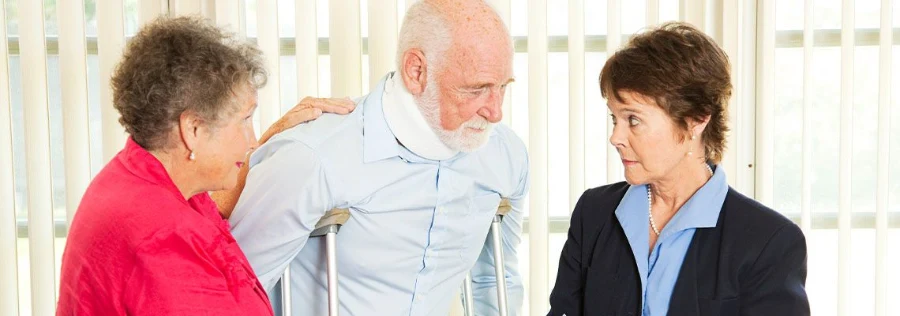
According to the National Safety Council (NSC), the average cost of an automobile accident in terms of medical expenses, wage and productivity losses, administrative expenses, motor vehicle damage, and employers’ uninsured costs range from $24,000 to $40,000 and up, using data from 2021. Disabling injuries average $155,000 and fatalities average $1,778,000.
In other words, insurance claims just from auto accidents can run into the tens of thousands of dollars, and victims of someone else’s negligence on the highway—and the at-fault driver’s insurance company—might well be liable for a large percentage of those sums.
Personal injuries, of course, don’t just occur from highway incidents, but also from slips and falls, dog bites, intentional acts, medical malpractice, and even physical assault. Other types of non-physical injuries such as slander and libel are also actionable, either by an insurance claim or by a lawsuit.
If you or a loved one has been injured because of someone else’s actions, inactions, negligence, or intentions in or around Anchorage, Alaska, don’t hesitate before moving forward. Immediately contact the Law Office of Jason Skala, LLC. I am a personal injury attorney with more than two decades worth of experience in fighting for the just compensation owed to injury victims. I also proudly serve clients in Bethel, Kotzebue, and Barrow (Utqiagvik), so if you are in the area, reach out now.
Common Personal Injuries
In car accidents, it is not unusual for a victim of another driver’s negligence or bad decision-making to suffer injuries to the head, neck, and spine. Though injuries are not limited to those parts of the body, these specific injuries (head, neck, and spine injuries) can lead to long-lasting and even debilitating results.
It is also possible to end up with broken bones or even internal bleeding. In severe cases, there can be disfigurement and perhaps loss of a vital organ or bodily function. For these reasons, it is important to get a complete medical evaluation after a car accident, especially since an adrenaline rush can often mask the pain that may surface, hours, days or even weeks later.
In addition, you’re going to need proof of a thorough and perhaps ongoing medical examination and treatment schedule to file an insurance claim or a personal injury lawsuit.
A slip-and-fall incident in, say, a retail establishment with an un-cordoned off slippery surface can also result in injuries in the head, neck, and spine. Concussions can result, as they can with a car accident, and if not identified, the concussion can eventually lead to traumatic brain injury. This can be disabling.
Pure Comparative Negligence
Alaska uses what is called the pure comparative negligence standard in assessing claims, whether before an insurance company or a jury in a personal injury lawsuit. Pure comparative negligence involves assigning a percentage of the blame to both parties involved.
Say you’re driving down the highway and suddenly stop because an animal jumps in front of your vehicle. The driver behind you, who was following too closely, rear-ends you, causing injuries to you and your passengers. However, your brake lights malfunctioned.
The claims adjuster or jury might find you 30 percent (or more or less) at fault because of your brakes. Suppose your claim is for $50,000. You would then receive only $35,000—$50,000 minus 30 percent. The other party would receive or retain the 30 percent, or $15,000.
Knowing When to Consult With a Personal Injury Attorney
Unless you’re involved in a minor fender-bender that results in few or no injuries, it is always good practice to a) seek immediate medical evaluation if you’ve been in an accident or other injury-prone incident such as a slip and fall, and b) seek the counsel of a personal injury attorney.
For one thing, the insurance companies have pretty much stacked the deck against you. They have a team of professionally trained claims adjusters to grill you to get you to admit to some or all of the fault for what happened. Even if you admit to some fault, your claim can be diminished.
Proving Negligence to Win Your Claim or Lawsuit
Another reason for seeking the guidance and assistance of a personal injury attorney is that proving negligence by the other party isn’t always cut and dry. As above, your faulty brake lights can expose you to negligence on your own part.
Even in a slip-and-fall incident, the storeowner’s liability insurance company can cite the fact that you were busy talking on your smartphone and didn’t notice that a bottle had fallen from the shelf and created a slippery surface when it crashed.
What may seem straightforward to you can be open to numerous interpretations, and going it alone without the experience of a personal injury attorney can put you at a solid disadvantage. You may end up agreeing to the first settlement the insurance company offers, which is no doubt going to be a low-ball offer. Remember, settlements are final. You can’t go back and reopen your claim.
Ready to Talk? Schedule a Free Consultation
A personal injury claim, especially if it’s more than a couple of surface bruises and a scrape or two, is not really a DIY project. The claims adjuster assigned to your case knows all the tricks of getting you to admit to some part of the fault or agree to some condition that will limit their liability. Let an experienced personal injury attorney deal with the claims adjuster.
If you or a loved one has been injured because of someone else’s actions, inactions, intentions, or negligence in or around Anchorage, Alaska, reach out to me at the Law Office of Jason Skala, LLC immediately. Your initial consultation is free.